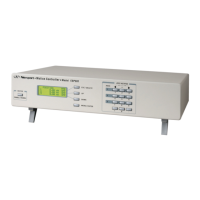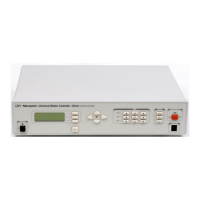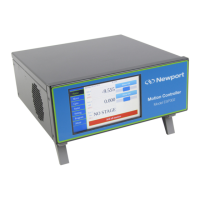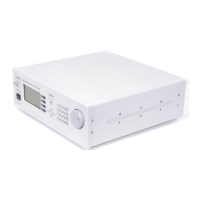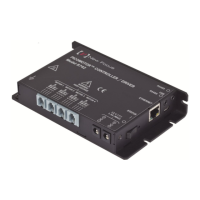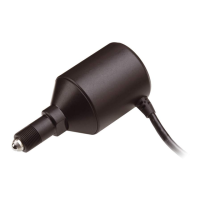XPS-Q8 Controller Motion Tutorial
The tracking velocity calculates as follows:
• AnalogInput is the voltage input at the GPIO
• AnalogGain refers to the AnalogGain setting of the analog input
• Offset, Order, DeadBandThreshold, and scale are defined with the function
PositionerAnalogTrackingVelocityParametersSet
• MaxADCAmplitude, InputValue, OutputValue are internally-used parameters only
InputValue = AnalogInput - Offset
if (InputValue >= 0) then
InputValue = InputValue - DeadBandThreshold
if (InputValue < 0) then InputValue = 0
else
InputValue = InputValue + DeadBandThreshold
if (InputValue > 0) then InputValue = 0
OutputValue = (|InputValue|/ MaxADCAmplitude) * Order
Velocity = Sign(InputValue) * OutputValue * Scale * MaxADCAmplitude
In the dead band region there is no motion. If the order is set to 1, then the velocity is
linear with respect to the input voltage.
If order is set greater than 1, then the velocity response is polynomial with respect to the
input voltage. This makes the change in velocity more gradual and more sensitive in
relation to the change in voltage.
A good example for using analog velocity tracking is for an analog joystick.
Example
Following is an example that shows the sequence of functions used to set-up Analog
Velocity Tracking:
GroupInitialize (Group)
GroupHomeSearch (Group)
…
PositionerAnalogTrackingVelocityParameterSet (Group.Positioner,
GPIO2.ADC1, Offset, Scale, DeadBandThreshold, Order, Velocity,
Acceleration)
GroupAnalogTrackingModeEnable (Group, “Velocity”)
…
GroupAnalogTrackingModeDisable (Group)
89 XPSDocumentation V1.4.x (EDH0301En1060 — 10/17)

